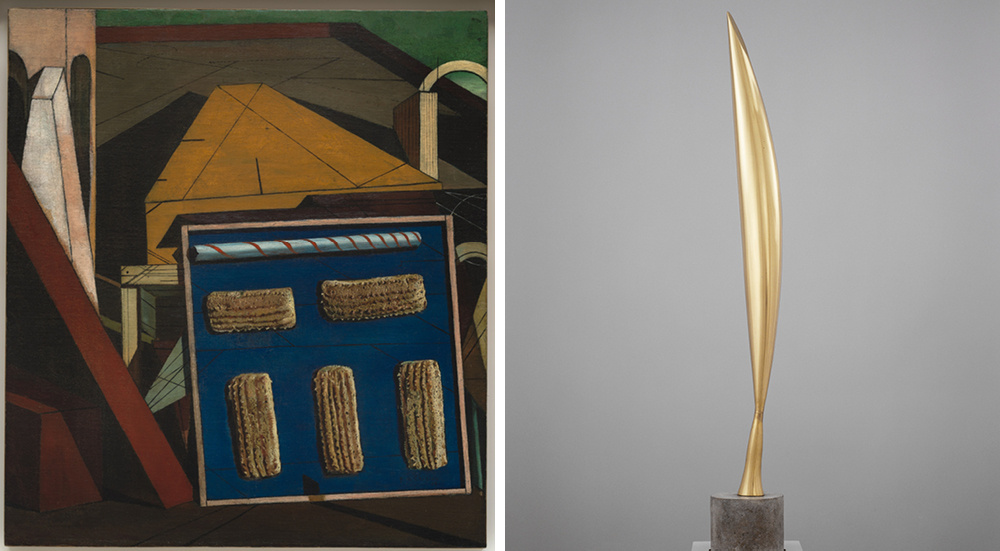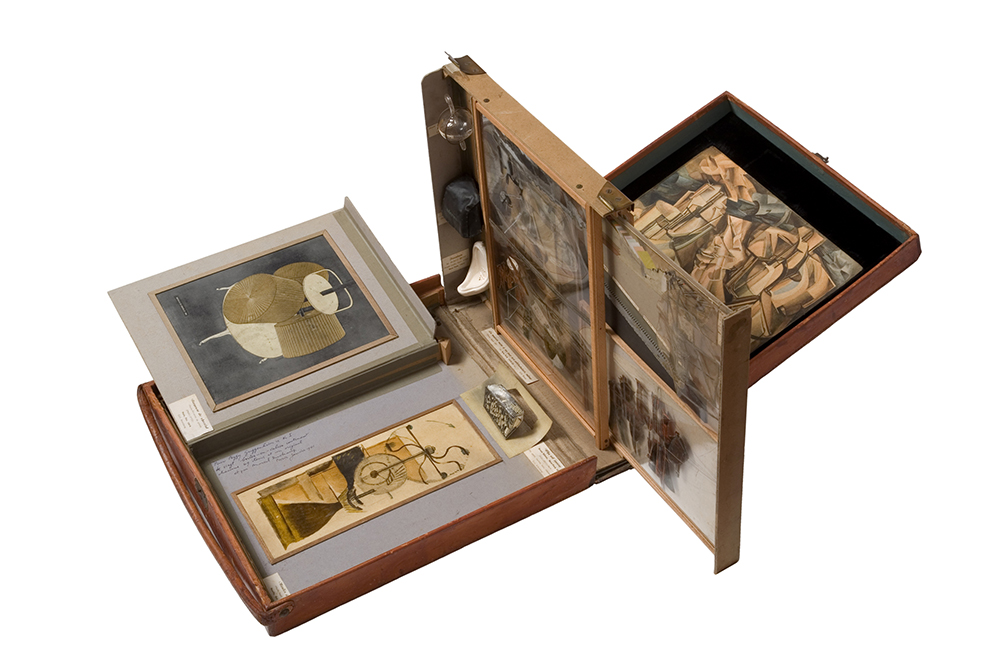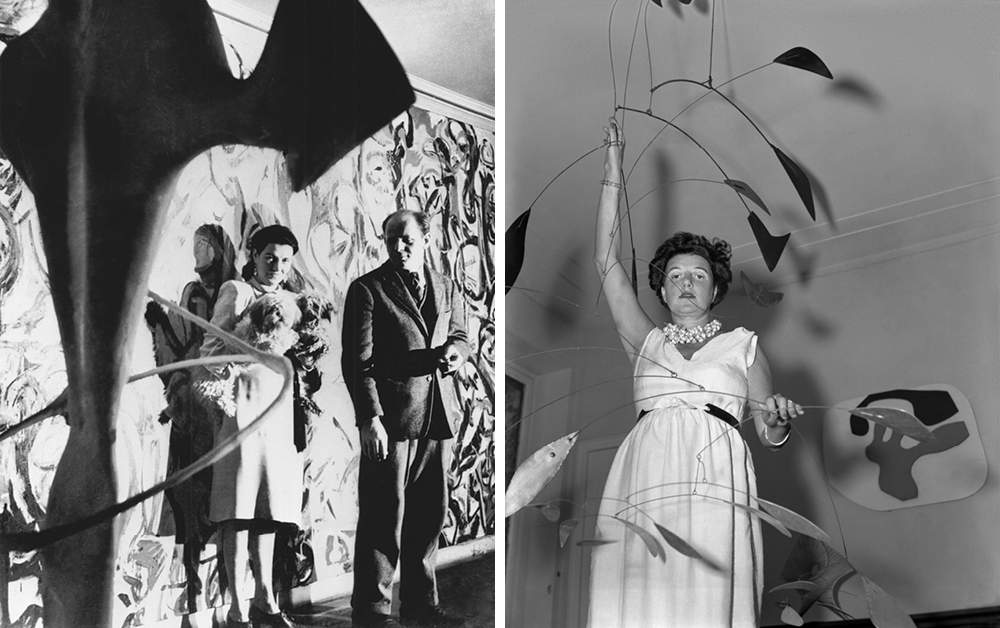PORT heads to the Palazzo Strozzi in Florence for an exhibition charting the life and collection of one of the greatest pioneers of modern art – Peggy Guggenheim

In 1940, as the Nazis were closing in on Paris, the American heiress Peggy Guggenheim was still living in the French capital. She had arrived in the 1920s, drawn to the city from her native New York by the Parisian avant-garde, and stubbornly refused to leave the artistic milieu of Marcel Duchamp and Pablo Picasso she had entered through her marriage to the Dada artist Laurence Vail.
Peggy had become well established as a collector by the time war swept across Europe, regularly buying work from her friends, both to support their careers and to satisfy her addiction for art, and even as she was preparing to leave the continent for New York she bought Bird in Space (1932-40) by the Constantin Brancusi. The Romanian sculptor’s poignant evocation in bronze of a bird taking flight would be one of many hundreds of works, along with many of the artists who made them, that Peggy took with her when she returned to her native New York in 1941 – saving both from destruction at the hands of the Nazis.

Giorgio de Chirico (1888–1978), 1916. Oil on canvas, 65.3 x 58.3 cm, Peggy Guggenheim Collection, Venice 76.2553.
Photo by David Heald © Giorgio de Chirico, by SIAE 2016 – Right: Bird in Space (L’Oiseau dans l’espace)
Constantin Brancusi (1876–1957), 1932–40. Polished brass, 151.7 cm high, including base, Peggy Guggenheim Collection, Venice 76.2553
Photo by David Heald © Constantin Brancusi, by SIAE 2016
Fittingly, Bird in Space is one of the first works encountered at the Palazzo Strozzi Foundation’s latest exhibitionL: From Kandinsky to Pollock: The Art of the Guggenheim Collections. The show charts the pioneering collection that, along with works acquired by her uncle Solomon, Peggy built both in Europe and America – a story that follows the evolution of modern art through the free, stylistically experimental moment of the 1920s and 30s, the Second World War and the first American art movement of international importance.
“She changed the Americans with the Europeans when she moved to New York in 1941”, explains the curator of the exhibition, Luca Massimo Barbero, the assistant curator of the Peggy Guggenheim Collection in Venice, when I ask him about the significance of Peggy’s collection. “Then, when she came back in 1947, she changed the Europeans with the Americans.”
Housed in the Palazzo Strozzi – a vast palace in the centre of Florence that dates back to the height of the Renaissance – the exhibition has a particular significance as it sees the return of 25 artworks from one of Peggy’s first exhibitions on her return to Europe, shown in 1949 in the basement of the palace, the Strozzina, before she found a permanent home for her collection in Venice.

Marcel Duchamp (1887–1968), 1941, leather valise containing miniature replicas and color reproductions of works by Duchamp, and one photograph with graphite, watercolor, and ink additions, 40.7 x 37.2 x 10.1 cm, Peggy Guggenheim Collection, Venice 76.2553
Photo by Sergio Martucci © Succession Marcel Duchamp, by SIAE 2016
Although she did not initially set out for Europe with the intention of becoming a collector, it was a role that Peggy, having inherited part of the Guggenheim mining fortune after her father died heroically in the sinking of the Titanic, quickly fell into. With the guidance of Duchamp and Nelly van Doesburg, Peggy began collecting formally and, after the short-lived Guggenheim Jeune gallery in London, she set herself enthusiastically to the task forming a museum of modern art. By the end of her time in Europe, she was buying a painting a day.
Travelling back to New York, Peggy was accompanied by what was perhaps the greatest collection of modern art at the time – spanning Picasso’s quick etchings produced to raise funds for the Spanish Civil War, the surrealist paintings of Peggy’s future husband, Max Ernst, to Duchamp’s conveniently portable La Boîte-en-Valise (miniature reproductions of Duchamp’s iconic and pioneering conceptual works in a briefcase). These works joined the rest of Peggy’s collection at her new gallery, Art of This Century. When it opened in 1942, it was the first place many young American artists had encountered the European avant-garde.

“The gallery was open for only five years and it changed the history of American painting”, Barbero explains. “New York was ready for the new kind of art that Peggy brought from Europe, but her real strength was in believing in very young and fresh artists such as Clyfford Still, Mark Rothko, Robert Motherwell – a new generation .”
No artist, however, demonstrates Peggy’s effect on the arts – in enabling a transatlantic cultural exchange and in promoting artists – better than Jackson Pollock.
“If you look at Pollock’s early work, you can really see the influence of European surrealism”, Barbero explains, “but more than that, Peggy was the only one believing in Pollock at the time”. It was a belief that continued throughout Pollock’s life, with the artist being the only person to have a contract with Peggy and, after his untimely death in 1956, Peggy cemented Pollock’s status as a vital component of Abstract Expressionism by donating his works to libraries, museums and universities in America, as well as showing his works for the first time in Europe at Palazzo Strozzi, much to the chagrin of the local Florentines. “It was a complete scandal,” Barbero says, smiling.

Walking through the exhibition, past masterpieces from every period of the European and American avant-garde – from Georgio de Chirico’s 1916 The Gentle Afternoon to Robert Motherwell’s Elegy to the Spanish Republic No.110, Easter Day from 1971 – it is clear that, perhaps more than any artist, no one had a greater influence on the history of modern art than Peggy. Although born into money and, compared to the artists she befriended, had a relatively ‘easy life’, it is quite possible that without Peggy’s patronage and support, many of the artists that are today regarded as pioneers of a new, experimental art, would never have found success.
Unlike her uncle Solomon, who collected from a distance, Peggy immersed herself in the avant-garde, her impassioned collecting a consequence of an insatiable lust for art and, ultimately, for life.
“She came to Europe in order to understand the avant-garde, and understanding means to live,” says Barbero. “She thrived in the melting-pot the avant-garde… never trying to please anyone and always informing the next generation.”
From Kandinsky to Pollock: The Art of the Guggenheim Collections runs until 24 July 2016 at the Palazzo Strozzi, Piazza degli Strozzi, 50123 Florence




